- You are here:
- Home »
- 1v1
Tag Archives for " 1v1 "
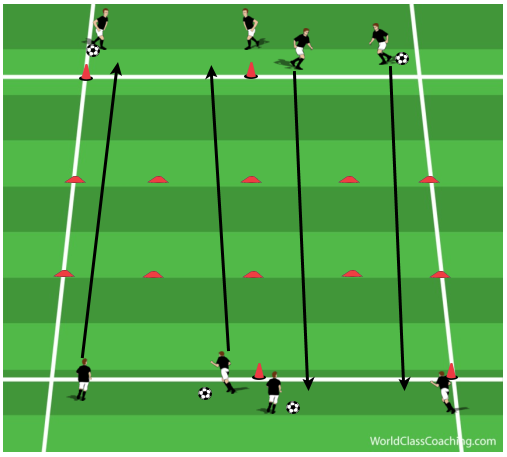
Combination Play Race
By Alex Trukan
This practice is focused on improving players’ explosiveness and anaerobic power. It is crucial conditioning component which is for example used when losing the ball and making transition to defence and during recovery runs. In addition to that, combination play element is incorporated to make the practice more realistic and add technical elements to it. The best way of organising this exercise is in the form of competition between two teams what will increase the intensity and engagement of the players.
Set up and Directions
Divide the 10 x 21 yards pitch into three thirds (7 yards long). Set up two channels on the opposite ends as shown on the diagram below. Divide the group into pairs and organise half of the pairs at the beginning of one channel and the other half at the start of the opposite channel. Each pair needs a ball.
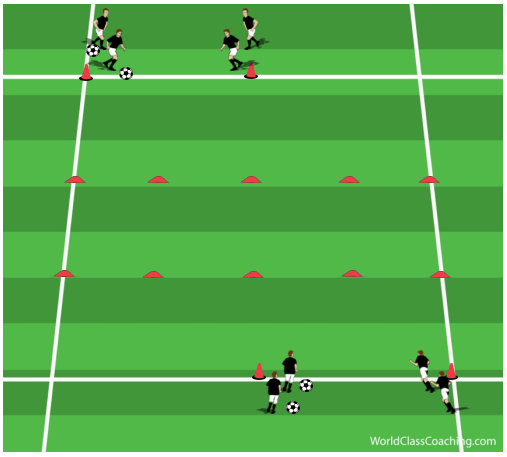
The game starts on the coach’s sign. Both pairs try to combine play through the thirds and get to the opposite end of the channel. The rule is that the ball has to be touched minimum once in every third and the ball can be only passed to the next third (no dribbling).
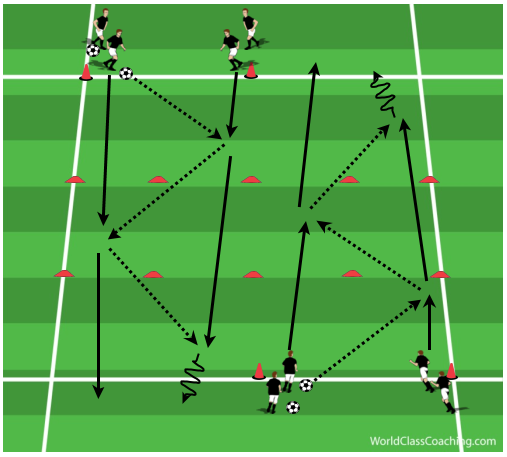
After both players have crossed the end of the channel, the ball should be left there and they should sprint as quickly as possible to the start of the channel. Whichever pair gets back first, wins the race.

Timing
Each pair should repeat the race 4-6 times in 1-2 series. The rest period between repetitions should be 1 minute (other pairs working) and between series – 4 minutes (active rest).
Variations
- Certain amount of passes to be made in each third
- Increase/decrease the distance of the channel
- Four zones instead of thirds
By Alex Trukan, Development Coach, Nottingham Forest
@AlexTrukan
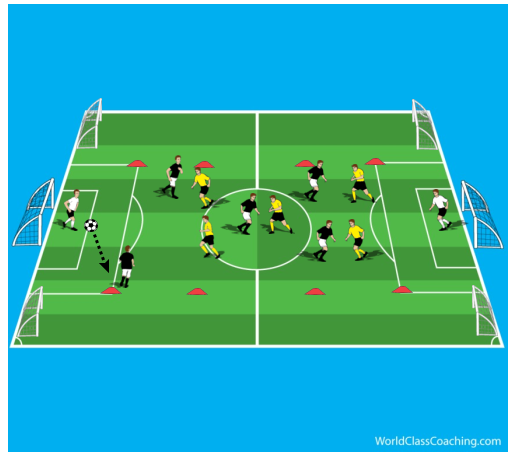
Individual Duels Game
By Alex Trukan
This game is focused on improving aerobic endurance as well as 1v1 duels. From the physical point of view, it helps players to maintain many actions throughout the whole game, what will enable them to be more involved and affect the game more even towards the end of it. From the technical perspective, this practice also incorporates 1v1 high intensity duels, what increases competitiveness and engagement. Individual duels’ game is mostly suitable for older age groups, usually from U12 upwards.
Set up and directions
Organise a 30 x 40 yards pitch with two big goals (one on each end), and four small goals (two on each end in wide areas). Cone off two wide zones, each 4 yards wide as shown on the diagram below. Divide the group into two teams of five. Place goalkeepers in goals. Prepare min. 8 balls to supply if needed. Assign individual duels for every player (i.e. right back from team A responsible for left winger from team B).
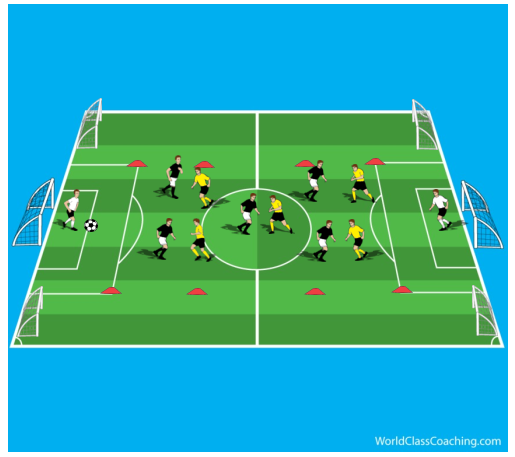
The game starts in the middle zone, no players are allowed to go into wide coned off areas. The goalkeeper plays the ball into one of the players from his team (no restrictions into who the ball should be played).

The player on the ball can decide – continue the game in the middle zone and try to score in the big goal or dribble into wide area. As soon as he dribbles into wide area, only the player that is responsible for him can go into the wide area and try to defend.
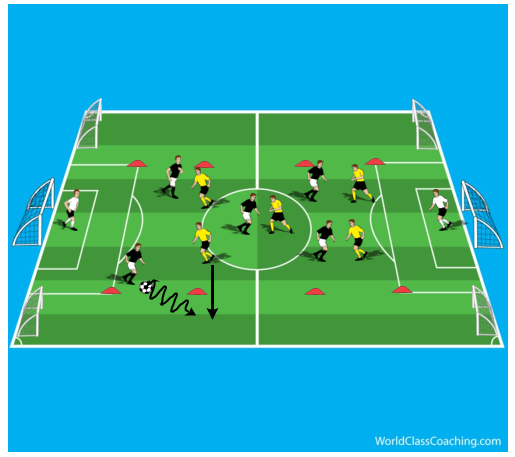
The 1v1 duel continues in the wide area with players trying to score in the opposite small goals. If the ball goes out or the goal is scored, the duel finishes and both players come back to the middle zone. At the same time as the duel is being played, a coach/goalkeeper plays second ball into the middle zone and the game continues normally (player on the ball can choose to go into other wide area).
[wpsharely id=”1886″][/wpsharely]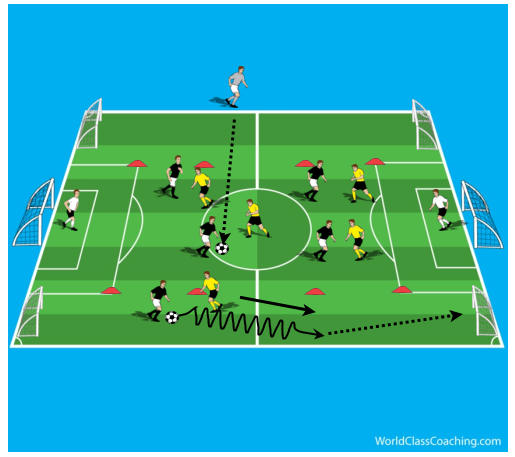
Timing
The game continues 4-8 minutes and is repeated 4-6 times with 2 minutes rest between repetitions.
Variations
- 5v5/7v7
- Increase/decrease the size of the area
- Play without the goalkeepers
By Alex Trukan, Development Coach, Nottingham Forest
@AlexTrukan
